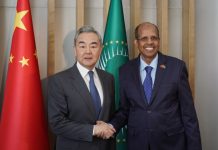BEIJING: A key focus of the Fifth Plenary Session of the 19th Communist Party of China (CPC) Central Committee, held in Beijing from October 26 to 29, was the blueprint of the 14th Five-Year Plan (2021-25), which will be a key guide for Chinese development for years to come.
This plan is a set of major adjustments as China continues to pivot away from export-led growth and implements the dual-circulation strategy—which consists of making the country more self-sufficient, increasing domestic demand, and simultaneously maintaining opening up and Chinese exports, for the near-long-term at least.
This adjustment arrives with the convergence of three factors—longstanding needs, new pressures associated with Washington’s China containment efforts and threats of decoupling, and a very fluid global situation due to the novel coronavirus disease (COVID-19).
Plenaries were already closely watched affairs, both in and outside China, and their importance has accelerated even more so this year. Indeed, China’s status as a rising power vis-à-vis the U.S. as a declining power, as the anchor of the Asian century and increasingly, as the manufacturing capital of the world, as an emerging global health superpower, and by some measures the world’s most advanced technological society, means that others in the world increasingly look to China to be a driver of solutions to global problems.
These include producing vital supplies, bringing stability and stimulus to the global economy in a time of pronounced crises, and serving as a global leader for preserving and reforming multilateralism, in tandem with confronting intersecting problems like global warming and the pandemic. But it also means that some international firms will find their China-related business models significantly affected for better or worse. The new five-year plan, to be initiated at a time when China and the world are undergoing major changes, marks, for China, the first of two 15-year periods. The first is expected to basically achieve socialist modernization by 2035, in part by maintaining an annual growth rate of 5 percent, avoiding the “middle income trap,” and improving governance. This would likely include when China achieves parity with the U.S., and serve as a bridge to the second 15-year period, through which China aims at establishing a fully modernized socialist country, marking the 100th anniversary of the founding of the People’s Republic of China. And along the way, if all of this proves successful, it demonstrates the power of central planning.
Responding to uncertainties: China was in some instances pushed into reactionary positions, particularly as the U.S. targeted it with illegal tariffs and undermined China’s reputation and advanced technology sectors worldwide, and also as the pandemic unfolded at home and abroad and required major unplanned adjustments.
– The Daily Mail-Beijing Review News exchange item





